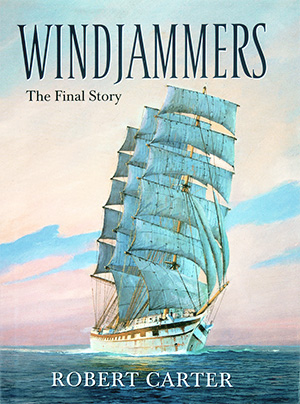It was through his friendship with Captain Eben Anderson, a master mariner who had rounded Cape Horn four times in the 1920s, that Robert was introduced to a host of other sailing-ship men who were members of the Cape Horners Association. Captain Anderson suggested that Robert write a book containing the memoirs of those who had contributed to his research and the book should be illustrated with Robert’s paintings.
Windjammers: The Final Story is the result. So here we have interviews with the last survivors of the sailors of sail, extracts from their diaries, chapters on British and American vessels, the French Bounty Ships, The German ‘P Liners’, North American Sail, the Grain Ships and the Erikson Era, wartime and post-war windjammers, and much else besides. Not only that, the book, which is beautifully produced in large format, is awash with fine reproductions of Robert’s paintings.
All in all, this book is a must for anyone interested in the final epoch in the long history of deepwater commercial sail.
An excerpt from Traditional Boats and Tall Ships Dec 2005 / Jan 2006

